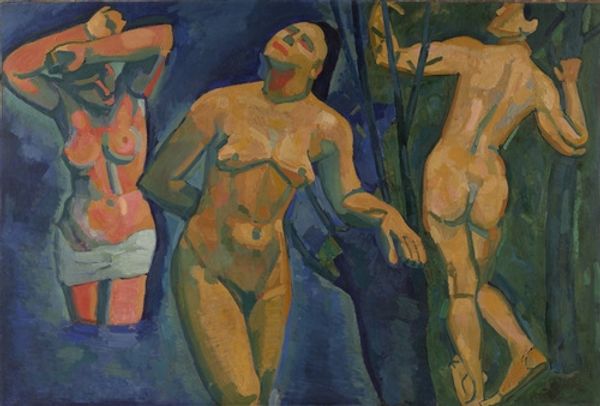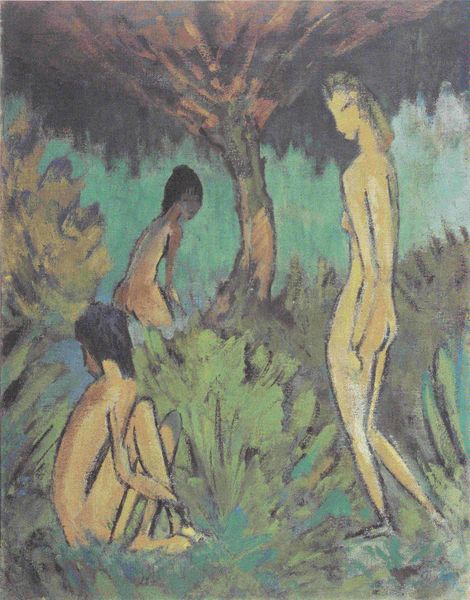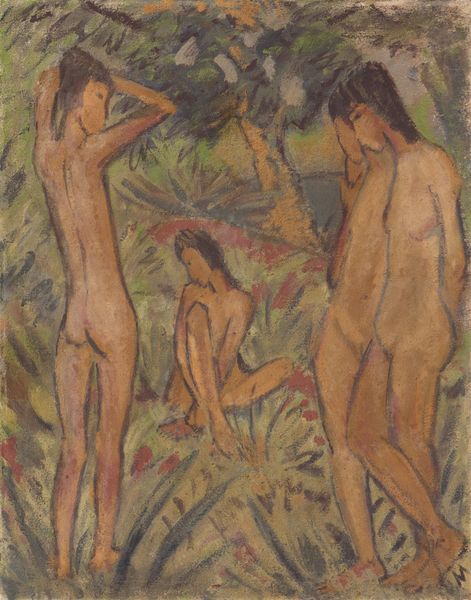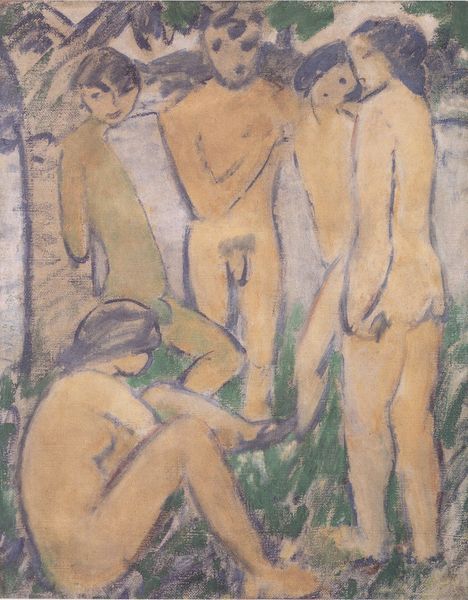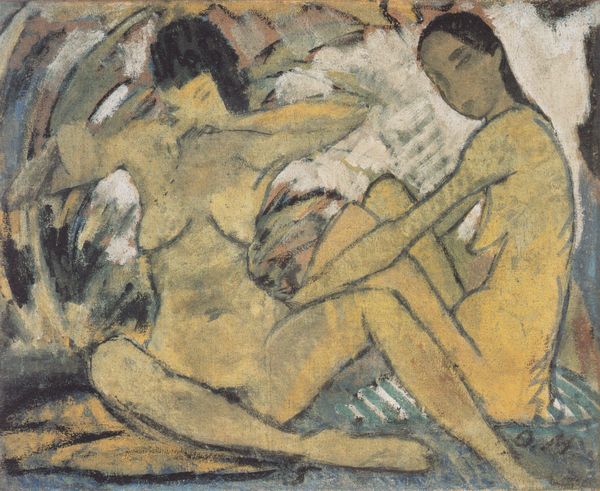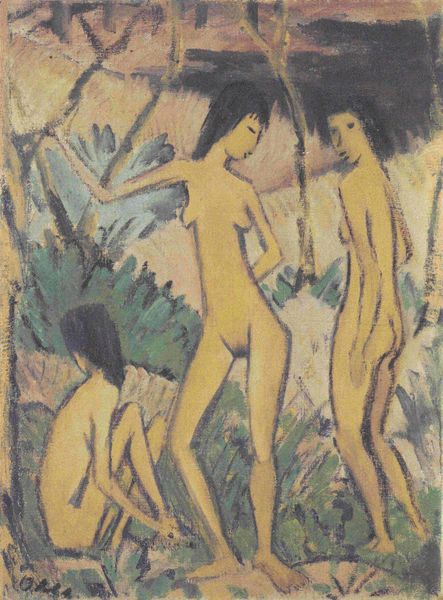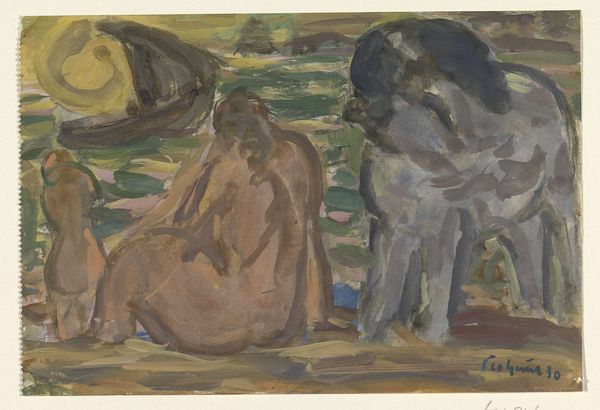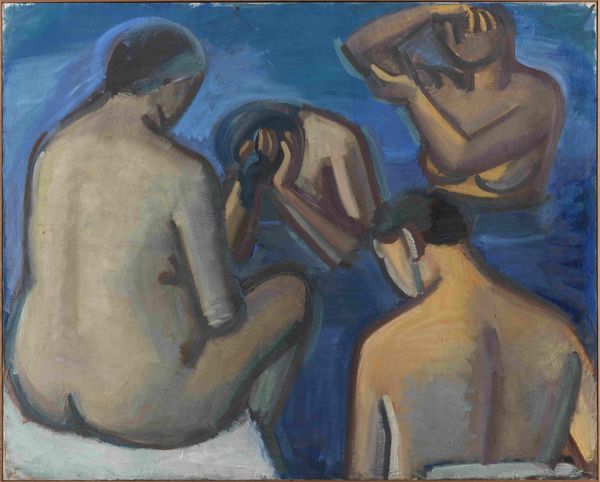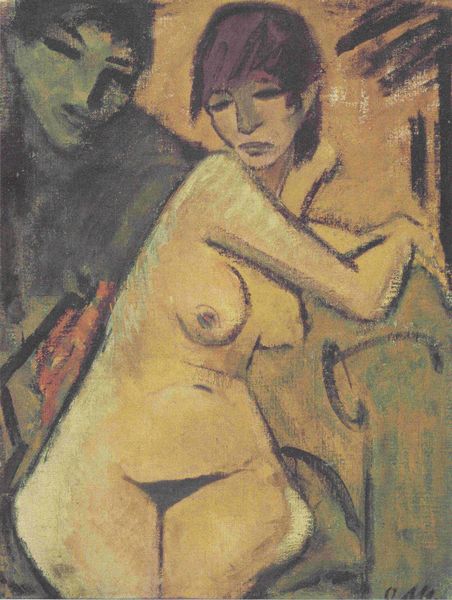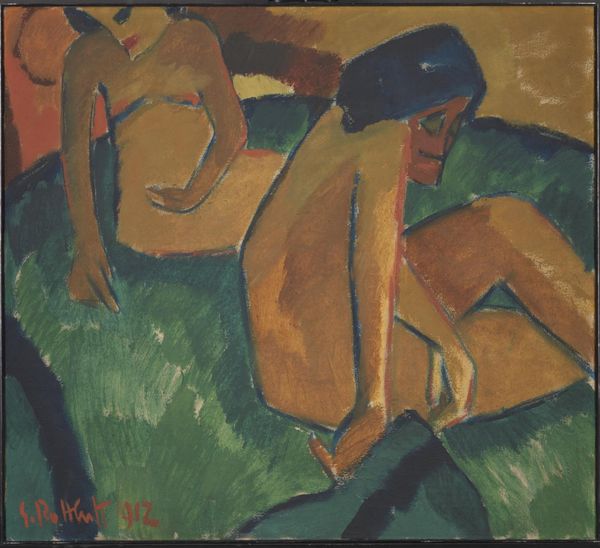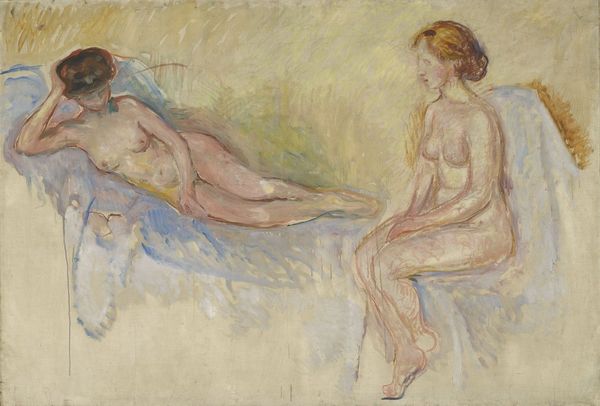
painting, oil-paint
#
painting
#
oil-paint
#
figuration
#
oil painting
#
expressionism
#
genre-painting
#
nude
Dimensions: 121.5 cm (height) x 149 cm (width) (Netto), 136.7 cm (height) x 164.5 cm (width) x 6.1 cm (depth) (Brutto)
Harald Giersing made this painting, The Judgement of Paris, using oil on canvas. The marks are so immediate, like a sketch right there on the canvas. There’s a real generosity in the brushstrokes and the somewhat limited colour palette of greens, ochres and blues, Giersing isn't precious about getting it perfect, instead, he embraces the process of artmaking. Check out how the paint sits on the surface, it’s thick and juicy in places, almost like he’s sculpting with it. You can practically see the energy of his hand as he moves the brush around the canvas. Take a look at the figure in the middle; her back is turned to us, but there's such a lovely sense of form created with just a few strokes of paint. It's both representational and abstract at the same time. Giersing reminds me a bit of someone like Kirchner, in that he isn't afraid to let the rawness of the medium show through. It’s a painting that celebrates the act of painting itself, inviting us to engage with its ambiguities and find our own meanings within it.
Comments
statensmuseumforkunst almost 2 years ago
⋮
The title of this piece refers to the Ancient Greek legend of Prince Paris, who was called upon to decide who was more beautiful of the three goddesses Hera, Athena, and Aphrodite. Giersing’s painting is indeed peopled by three women and a man, but it might just as well be viewed as a studio scene where the women are models posing nude for a man, possibly the painter. At the same time, the prominent use of colour and lines direct attention away from the mythological narrative to the artistic devices used in the painting. The motif's ambiguity The ambiguity of the motif should be regarded as a deliberate strategy on Giersing’s part. His ambition with this picture was to challenge and reinvent classic figure painting. The coarseness, the pareddown palette, the indeterminable placement of the figures within the space, and, very significantly, the thick black contours undulating down the picture plane to form ornamental sequences were all fierce attacks against the finely hewn naturalistic norms prevalent at the time. A new, modern vein of figure painting The picture can be viewed as a proposal for a new, modern vein of figure painting that has the reality of art itself as its true content. The Judgement of Paris attracted a great deal of attention when it was first presented to the public in 1910, and it was instrumental in establishing Giersing’s position as one of the most important artists of the young generation of modernists.
Join the conversation
Join millions of artists and users on Artera today and experience the ultimate creative platform.
